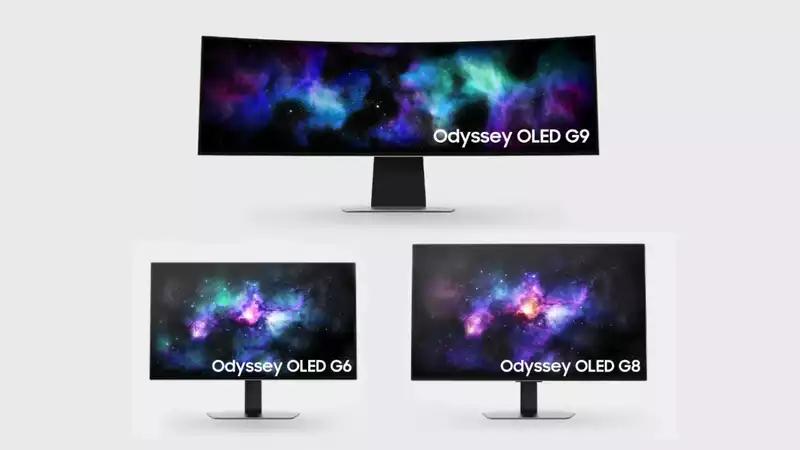Samsung's new Odyssey G8 monitor is now available. OLED. No, it is different from the Odyssey OLED G8 that Samsung already sells. This one is 32" 4K and runs at 240 Hz.
It is quite different from the existing Samsung Odyssey OLED G8 34-inch ultrawide (3,440 x 1,440 pixels) and Samsung Odyssey G8 non-OLED.
There is also the new Samsung Odyssey OLED G6, which is different from the existing Samsung Odyssey G6 model. There is also a Samsung Odyssey OLED G9 upgrade, which should be noted, as there are two completely different Samsung Odyssey G9 monitors.
The full model names for each screen are Samsung Odyssey OLED G8 G80SD, Samsung Odyssey OLED G6 G60SD and Samsung Odyssey OLED G9 G95SD.
Now let's turn to the G8, the most exciting in Samsung's gaming OLED series. Samsung has not announced too many details other than 4K resolution, 240 Hz, and 32-inch proportions.
A response time of 0.03ms is cited, which is impressive indeed, but also standard for the latest OLED gaming panels. We would like to know more details about the panel, especially considering that it has a much higher pixel density than previous Samsung OLED monitors. [This novel high pixel density model is presumably based on a new generation of OLED technology, so it may actually be even better.
After all, the new Samsung Odyssey OLED G8 raises as many questions as it answers. However, we are very excited to see an OLED gaming monitor with 4K native resolution on a 32-inch panel.
All previous 4K OLED monitors have been based on much larger panels taken from TVs, which have a disappointing pixel density of less than 100 pixels per inch. This new G8, at 140 DPI, should deliver sharp image quality and be useful for font rendering, for example.
Anyway, another new addition to the Samsung OLED series is the Odyssey OLED G6. The basic proportions are nothing we haven't seen before from at least one other manufacturer: a 27-inch 1440p model. [However, existing 27-inch 1440p OLED monitors are based on LG's WOLED, not Samsung's QD-OLED technology. Furthermore, the Odyssey OLED G6 can achieve 360 Hz and shares a ridiculously low response time of 0.03 ms with other QD-OLED panels.
One might wonder, but both the G8 and G6 are flat rather than curved, a first for Samsung's OLED gaming panels. As for these updates to the existing G9 Beast we reviewed last year, they have nothing to do with image quality, but instead with the Multi Control feature that is said to allow users to seamlessly transfer images and text between Samsung monitors and other Samsung devices, Matter and the Samsung SmartThings Hub, which supports a variety of IoT devices compatible with the Home Connectivity Alliance (HCA).
We do not have an exact release date, although we expect it should not be more than a few months before these new panels go on sale. Nor do we have any information on pricing.
It will be particularly interesting to see how Samsung markets the G8 model, given that it is Samsung's first OLED gaming monitor and not ultimately derived from a TV OLED panel. Will the added pixel density come at a higher price?


Comments